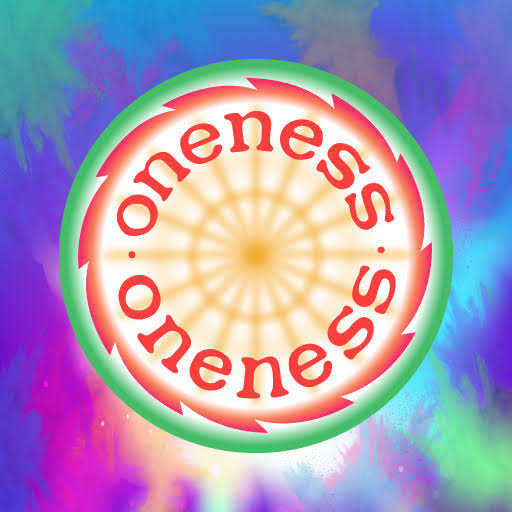In the modern world, terms such as equality, social justice, and identity have become central to socio-political discourse. These ideas, though seemingly noble, have often led to division, resentment, and violence, particularly when enforced through ideological frameworks like Marxism, Critical Theory, and Intersectional Politics. History is replete with tragic outcomes, more than 10 crore (100 million) people lost their lives under Communist regimes, all in the name of equality.
But Bharat has always offered an alternative civilisational model. Bed out in the timeless truths of Sanātana Dharma, this model does not chase the illusion of equality. Instead, it celebrates Oneness (Advaita)—the spiritual unity behind all diversity. It recognises differences not as injustices, but as expressions of the divine cosmic play (Leela).
Equality vs. Oneness: A Philosophical Distinction
Equality, as proposed in Western thought, is largely material and political. It assumes that all disparities are injustices and must be erased. But nature itself thrives on diversity, not uniformity. No two leaves are identical, no two human beings are the same in ability, interest, or purpose.
In contrast, Advaita Vedānta, the crown jewel of Hindu philosophy, proclaims:
“एकमेवाद्वितीयम्”
— छान्दोग्य उपनिषद्
“One alone exists without a second.”
The multiplicity of forms is real at the relative level (Vyāvahārika Satya), but ultimately, all is Brahman, pure consciousness (Pāramārthika Satya). This non-dual vision dissolves all man-made divisions of caste, gender, race, and class into the unifying awareness of the Self.
Advaita as the Foundation of Social Harmony
Advaita does not negate diversity but sublimates it. It teaches that behind the many, there is One Self (Ātman):
“तत्त्वमसि”
— छान्दोग्य उपनिषद्
“Thou art That.”
Here lies the solution to social disharmony. True harmony arises not from enforcing equality, but from recognising the divine essence in all.
In the Bhagavad Gītā, Kṛṣṇa tells Arjuna:
“विद्या-विनय-सम्पन्ने ब्राह्मणे गवि हस्तिनि ।
शुनि चैव श्वपाके च पण्डिताः समदर्शिनः ॥”
— भगवद्गीता 5.18
“The wise see the same (Self) in a Brahmana endowed with knowledge and humility, a cow, an elephant, a dog, and even an outcaste.”
This is not equality in capability, but oneness in being. Such a view does not negate hierarchy; it transcends it.
Diversity is Sacred in Hindu Thought
Śruti—that which is heard, the revealed knowledge of the Vedas arises out of cosmic diversity. Different Ṛṣis received different mantras. The Vedas did not homogenise wisdom. They recorded diverse insights from multiple seers, yet all pointed toward the same Truth (Ṛta).
“एकं सद् विप्राः बहुधा वदन्ति”
— ऋग्वेद 1.164.46
“Truth is one; the wise call it by many names.”
Thus, Hindutva never tried to flatten society. It embraced Varṇa and Āśrama not as rigid caste identities, but as fluid spiritual archetypes, tailored to a person’s nature (Svabhāva) and stage in life.
This is not inequality, but harmony-in-diversity a cosmic symphony, not a monochrome painting.
Beyond Gender: The Transcendent Unity of Śakti and Śiva
Hindutva never saw gender as binary or as a source of conflict. In the ultimate sense, there is no male or female.
“न स्त्री न पुमान् न चैवायं नापुंसक एव च”
— श्वेताश्वतर उपनिषद् 5.10
“The Self is neither woman, nor man, nor neuter.”
Every man contains the feminine (Śakti), and every woman the masculine (Śiva). Ardhanārīśvara, the half-man, half-woman form of Śiva-Pārvatī, embodies this unity of polarities.
The Tantras speak of the union of Puruṣa and Prakṛti as the source of all creation. Neither is superior or inferior they are interdependent. The modern conflict between genders arises only when this sacred vision is lost.
Critical Theory vs. Sanātana Dharma: A Civilisational Clash
Modern theories like Critical Race Theory, Gender Theory, or Queer Theory promote a perpetual victim-oppressor dialectic. They teach people to identify with their grievances and fight endless wars of identity.
But in Sanātana Dharma, identity is a veil (Upādhi). To cling to it is to miss the Truth. The Māyā of name and form is not denied, but transcended through knowledge and spiritual practice.
“यत्र नान्यत् पश्यति नान्यत् शृणोति नान्यद् विजानाति स भूतम्”
— छान्दोग्य उपनिषद् 7.24.1
“Where one sees nothing else, hears nothing else, knows nothing else, that is the Infinite.”
Instead of endless activism, the Hindu approach is inner transformation (Ātma-Vidyā). Real liberation (Mokṣa) is not political, but spiritual.
Practical Implications: From Division to Dharma
Rather than inflaming differences, Hindu thought encourages fulfilling one’s Svadharma. When every person performs their natural role with a sense of Yajña (sacrifice), society becomes a cosmic organism.
“सहयज्ञाः प्रजाः सृष्ट्वा पुरोवाच प्रजापतिः ।
अनेन प्रसविष्यध्वम् एष वोऽस्त्विष्टकामधुक् ॥”
— भगवद्गीता 3.10
“With Yajña, the Lord of beings created beings and said: through this, you shall prosper and fulfill your desires.”
Thus, the path to social harmony is not through enforcing sameness, but by discovering spiritual unity within functional diversity.
Advaita as the Antidote to Modern Conflicts
The world today suffers not from inequality but from a lack of spiritual vision. Equality as preached today often means dragging everyone down to a common denominator, erasing excellence, tradition, and identity.
In contrast, Advaita uplifts all by revealing the divine within each being. It is not about rights, but about realisation. Not about protests, but about practices. It replaces resentment with reverence, and competition with compassion.
Let us then return to this civilisational wisdom, not only as an academic pursuit but as a living practice. In this age of confusion and fragmentation, Advaita is the answer, a perennial path to inner peace, outer harmony, and universal love.
(The views expressed are the author's own and do not necessarily reflect the position of the organisation)

